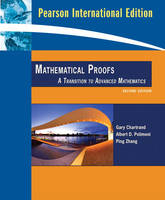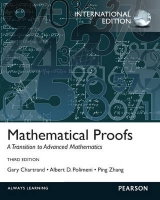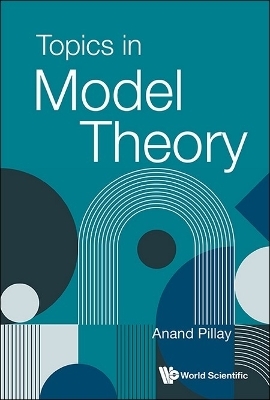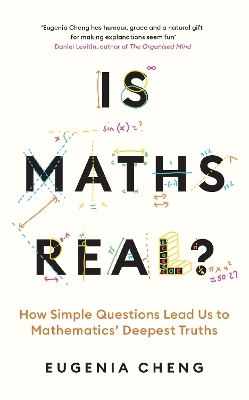
Mathematical Proofs
Pearson (Verlag)
978-0-321-52673-1 (ISBN)
- Titel erscheint in neuer Auflage
- Artikel merken
Gary Chartrand is Professor Emeritus of Mathematics at Western Michigan University. He received his Ph.D. in mathematics from Michigan State University. His research is in the area of graph theory. Professor Chartrand has authored or co-authored more than 275 research papers and a number of textbooks in discrete mathematics and graph theory as well as the textbook on mathematical proofs. He has given over 100 lectures at regional, national and international conferences and has been a co-director of many conferences. He has supervised 22 doctoral students and numerous undergraduate research projects and has taught a wide range of subjects in undergraduate and graduate mathematics. He is the recipient of the University Distinguished Faculty Scholar Award and the Alumni Association Teaching Award from Western Michigan University and the Distinguished Faculty Award from the State of Michigan. He was the first managing editor of the Journal of Graph Theory. He is a member of the Institute of Combinatorics and Its Applications, the American Mathematical Society, the Mathematical Association of America and the editorial boards of the Journal of Graph Theory and Discrete Mathematics. Albert D. Polimeni is an Emeritus Professor of Mathematics at the State University of New York at Fredonia. He received his Ph.D. degree in mathematics from Michigan State University. During his tenure at Fredonia he taught a full range of undergraduate courses in mathematics and graduate mathematics. In addition to the textbook on mathematical proofs, he co-authored a textbook in discrete mathematics. His research interests are in the area of finite group theory and graph theory, having published several papers in both areas. He has given addresses in mathematics to regional, national and international conferences. He served as chairperson of the Department of Mathematics for nine years. Ping Zhang is Professor of Mathematics at Western Michigan University. She received her Ph.D. in mathematics from Michigan State University. Her research is in the area of graph theory and algebraic combinatorics. Professor Zhang has authored or co-authored more than 200 research papers and four textbooks in discrete mathematics and graph theory as well as the textbook on mathematical proofs. She serves as an editor for a series of books on special topics in mathematics. She has supervised 7 doctoral students and has taught a wide variety of undergraduate and graduate mathematics courses including courses on introduction to research. She has given over 60 lectures at regional, national and international conferences. She is a council member of the Institute of Combinatorics and Its Applications and a member of the American Mathematical Society and the Association of Women in Mathematics.
0. Communicating Mathematics
Learning Mathematics
What Others Have Said About Writing
Mathematical Writing
Using Symbols
Writing Mathematical Expressions
Common Words and Phrases in Mathematics
Some Closing Comments about Writing
1. Sets
1.1 Describing a Set
1.2 Subsets
1.3 Set Operations
1.4 Indexed Collections of Sets
1.5 Partitions of Sets
1.6 Cartesian Products of Sets
Exercises for Chapter 1
2. Logic
2.1 Statements
2.2 The Negation of a Statement
2.3 The Disjunction and Conjunction of Statements
2.4 The Implication
2.5 More on Implications
2.6 The Biconditional
2.7 Tautologies and Contradictions
2.8 Logical Equivalence
2.9 Some Fundamental Properties of Logical Equivalence
2.10 Quantified Statements
2.11 Characterizations of Statements
Exercises for Chapter 2
3. Direct Proof and Proof by Contrapositive
3.1 Trivial and Vacuous Proofs
3.2 Direct Proofs
3.3 Proof by Contrapositive
3.4 Proof by Cases
3.5 Proof Evaluations
Exercises for Chapter 3
4. More on Direct Proof and Proof by Contrapositive
4.1 Proofs Involving Divisibility of Integers
4.2 Proofs Involving Congruence of Integers
4.3 Proofs Involving Real Numbers
4.4 Proofs Involving Sets
4.5 Fundamental Properties of Set Operations
4.6 Proofs Involving Cartesian Products of Sets
Exercises for Chapter 4
5. Existence and Proof by Contradiction
5.1 Counterexamples
5.2 Proof by Contradiction
5.3 A Review of Three Proof Techniques
5.4 Existence Proofs
5.5 Disproving Existence Statements
Exercises for Chapter 5
6. Mathematical Induction
6.1 The Principle of Mathematical Induction
6.2 A More General Principle of Mathematical Induction
6.3 Proof by Minimum Counterexample
6.4 The Strong Principle of Mathematical Induction
Exercises for Chapter 6
7. Prove or Disprove
7.1 Conjectures in Mathematics
7.2 Revisiting Quantified Statements
7.3 Testing Statements
7.4 A Quiz of "Prove or Disprove" Problems
Exercises for Chapter 7
8. Equivalence Relations
8.1 Relations
8.2 Properties of Relations
8.3 Equivalence Relations
8.4 Properties of Equivalence Classes
8.5 Congruence Modulo n
8.6 The Integers Modulo n
Exercises for Chapter 8
9. Functions
9.1 The Definition of Function
9.2 The Set of All Functions from A to B
9.3 One-to-one and Onto Functions
9.4 Bijective Functions
9.5 Composition of Functions
9.6 Inverse Functions
9.7 Permutations
Exercises for Chapter 9
10. Cardinalities of Sets
10.1 Numerically Equivalent Sets
10.2 Denumerable Sets
10.3 Uncountable Sets
10.4 Comparing Cardinalities of Sets
10.5 The Schröder-Bernstein Theorem
Exercises for Chapter 10
11. Proofs in Number Theory
11.1 Divisibility Properties of Integers
11.2 The Division Algorithm
11.3 Greatest Common Divisors
11.4 The Euclidean Algorithm
11.5 Relatively Prime Integers
11.6 The Fundamental Theorem of Arithmetic
11.7 Concepts Involving Sums of Divisors
Exercises for Chapter 11
12. Proofs in Calculus
12.1 Limits of Sequences
12.2 Infinite Series
12.3 Limits of Functions
12.4 Fundamental Properties of Limits of Functions
12.5 Continuity
12.6 Differentiability
Exercises for Chapter 12
13. Proofs in Group Theory
13.1 Binary Operations
13.2 Groups
13.3 Permutation Groups
13.4 Fundamental Properties of Groups
13.5 Subgroups
13.6 Isomorphic Groups
Exercises for Chapter 13
Answers and Hints to Selected Odd-Numbered Exercises
References
Index of Symbols
Index of Mathematical Terms
| Erscheint lt. Verlag | 1.11.2007 |
|---|---|
| Sprache | englisch |
| Maße | 232 x 190 mm |
| Gewicht | 620 g |
| Themenwelt | Mathematik / Informatik ► Mathematik ► Logik / Mengenlehre |
| ISBN-10 | 0-321-52673-2 / 0321526732 |
| ISBN-13 | 978-0-321-52673-1 / 9780321526731 |
| Zustand | Neuware |
| Haben Sie eine Frage zum Produkt? |
aus dem Bereich



